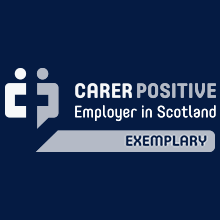Provoked headaches including exertional, cough, and sex related headache
Advice for initial management in primary care.pdf
Information
Most provoked headaches (e.g. those triggered by coughing, exercise, sexual activity etc) are benign (primary) but may rarely be associated with more serious secondary causes, and thus worry patients and doctors. The headache is usually migrainous in quality and typical migraine is often present in addition to the specific provoked syndromes. Most of these syndromes are benign and self-limiting. This advice is designed to be used in conjunction with existing advice about migraine treatment on Refhelp.
Exertional headache
This is the most common provoked headache, with lifetime prevalence up to 12%, and more common in women. It may occur during or after exercise and usually lasts minutes to hours. The headache is usually migrainous, occasionally thunderclap. It usually occurs in self-limiting bouts lasting weeks to years. Very rarely, exercise headache may be a manifestation of angina.
Cough headache
Lifetime prevalence is about 1% and it predominantly affects men. It is triggered by coughing/straining/Valsalva manoeuvres and typically short, lasting minutes, sometimes up to hours. It is usually self-limiting and briefly incapacitating. It can occasionally be associated with structural lesions, most commonly a Chiari 1; most Chiaris are common incidental findings. Even if a Chiari is identified, the natural history is benign; surgery is rarely indicated.
Primary headache associated with sexual activity (PHSA)
PHSA was previously called sex headache or coital cephalalgia. PHSA is associated with any form of sexual activity, solo or with partners. The prevalence is 1-2% with a male preponderance. PHSA manifests in two forms:
- Pre-orgasmic: this accounts for the minority of PHSA and characterised by headache increasing in severity as orgasm is approached and may be severe enough to cause activity to stop, often with headache relief.
- Orgasmic: thunderclap onset at the point of orgasm. This accounts for most PHSA and on the first episode at least, can mimic subarachnoid haemorrhage.
Both forms tend to last a few hours at the most; nausea may occur. Many are isolated but up to 40% may be recurrent over months/years. Once an established pattern is identified, a confident clinical diagnosis can be made.
Thunderclap headache
Although thunderclap HA is commonly associated with subarachnoid haemorrhage, most TH is benign/primary. Clinically it is impossible to distinguish primary (benign) causes from the less common but more serious secondary causes, thus patients presenting on the first occasion most likely require urgent investigation in hospital.
MA & RD 4/11/25
Who can refer:
GPs
Who to refer:
The first presentation of thunderclap usually needs urgent hospital assessment with CT scan +/- lumbar puncture unless the headache lasted less than 60 minutes with complete resolution.
A patient with recurrent cough headache can be reasonably referred for an OUTPATIENT CT Head (Neuroradiology – RefHelp ) which will pick up significant Chiari malformations or other relevant pathology.
Who not to refer:
Patients with recurrent episodes of provoked headache. Brain imaging is rarely required other than for reassurance although important to recall the radiation involved in CT and the risk of incidental findings (see fact sheet ). We are happy to discuss individual cases regarding the indication for imaging.
How to refer:
SCI & which option etc or alternative method
General Lifestyle Advice
Sometimes a short period of abstinence from sex/exercise or adopting a more passive role during intercourse/avoiding Valsalva can help, and most of the above are self-limiting. Causes of excessive coughing should be addressed (e.g. smoking, obesity, respiratory disease, reflux). Adequate hydration may reduce/avoid exercise induced headache.
Medical treatment (if required)
Indometacin is the recommended therapy for many of the above syndromes, usually taken prior to exercise/sex etc with an initial dose of 25mg. See also https://www.nhscfsd.co.uk/media/t25nk0wr/indometacin-sensitive-headache-v2.pdf If frequent/troublesome, standard migraine prophylaxis (e.g. propranolol) may be considered.













